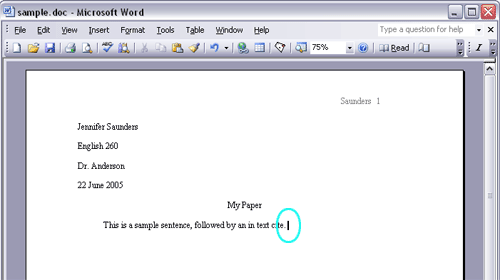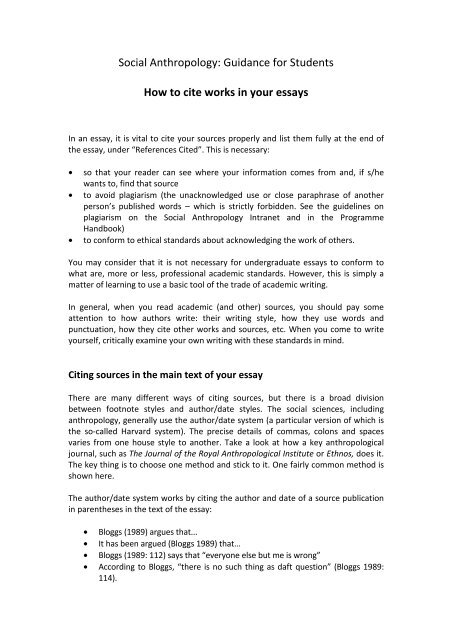

One year I introduced a new essay at the end of a unit that hadn’t previously had an essay assessment. “Wait…Do you know which ideas are yours?” Sure, when they did a research project, I would make them turn in a list of “source websites,” but it was still nothing formal. Whenever they insisted on using quotations in their writing, I would require them to cite the source of the quote using the same method they used in English class.īut I was still a long way from requiring both in-text and end-of-text citations. Meanwhile, in English class, the students were being taught MLA format for quotations. Students were using the discrete materials from class to formulate a historical argument, back up their ideas, and then write four or five paragraph essays. This approach to historical writing worked quite well for a few years. Creating citations on top of that was too much, I thought.

I was already asking them to do so many things – create an argument, find details to back it up, and write in a structured essay format. So long as we used the source in the current unit of study and students didn’t go elsewhere for information, I didn’t worry about citations. If the students used, say, the Constitution summary I provided the class, or a excerpt from Howard Zinn or Paul Johnson, or something found in their textbook, that was okay. I wanted them to be able to internalize the basic structure of an argumentative essay, make an argument, and back it up. See Office of Law Revision Council, Currency and Updating.When I first started teaching writing in history class a number of years ago, I was totally focused on the students just getting their ideas out and being able to write on historical themes. *There may be only a few months lag between when a law is passed and when it appears in the United States Code. If the law has just passed and does not yet appear in the United States Code, cite to the Public Law Number with a parallel citation to its location in Statutes at Large.Įxample: If you were citing this law shortly after it passed in 2005, and it had not yet appeared in the United States Code.*Įnergy Policy Act of 2005, Pub. Because I retrieved this from a publicly available website, rather than an academic database, the URL is appended to the end. 109-58 refers to Public Law number 58 from the 109th Congress, with a parallel citation to its location in volume 119, page 594 of the US Statutes at Large (119 Stat. 594, as amended, known as the Energy Policy Act of 2005, which enacted this chapter and enacted, amended, and repealed numerous other sections and notes in the Code.

To determine where the statute is codified (where it appears in the United States Code), follow this process: When a statute applies to numerous sections of the Code, and you wish to cite the Act as a whole, cite using the Public law number. If the statute (law/act) does not appear in the United States Code, cite using the Public Law number, and include the parallel citation to its location in Statutes at Large, when available., and you wish to cite the law as a whole, cite using the Public Law number, and include the parallel citation to the law's location in the Statutes at Large, when available. If the statute (law/act) is spread out among scattered sections of the U.S.C.number to indicate "and what follows." Note: You do not include U.S.C.

If the law spans a ranges of sections, add "et seq." after the U.S.C.
How to properly cite sources in text code#
In the U.S.C., or in the Public Law, look for statements about where the law applies to the Code (U.S.C.


 0 kommentar(er)
0 kommentar(er)
